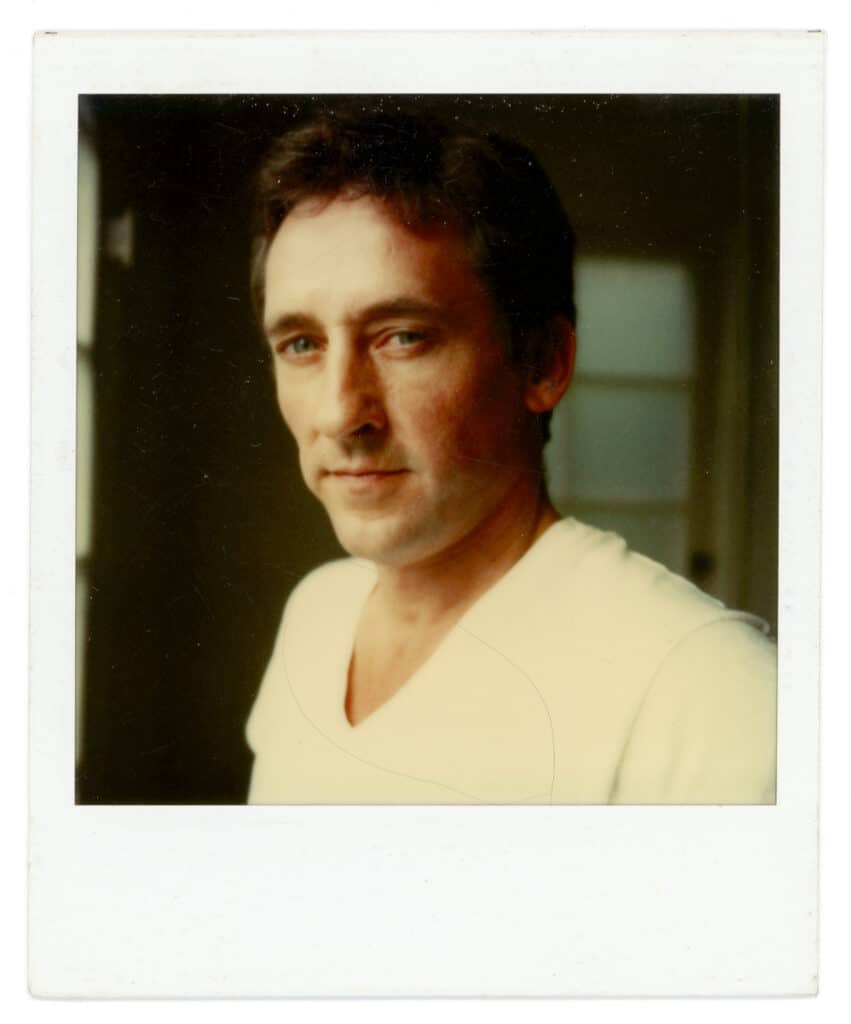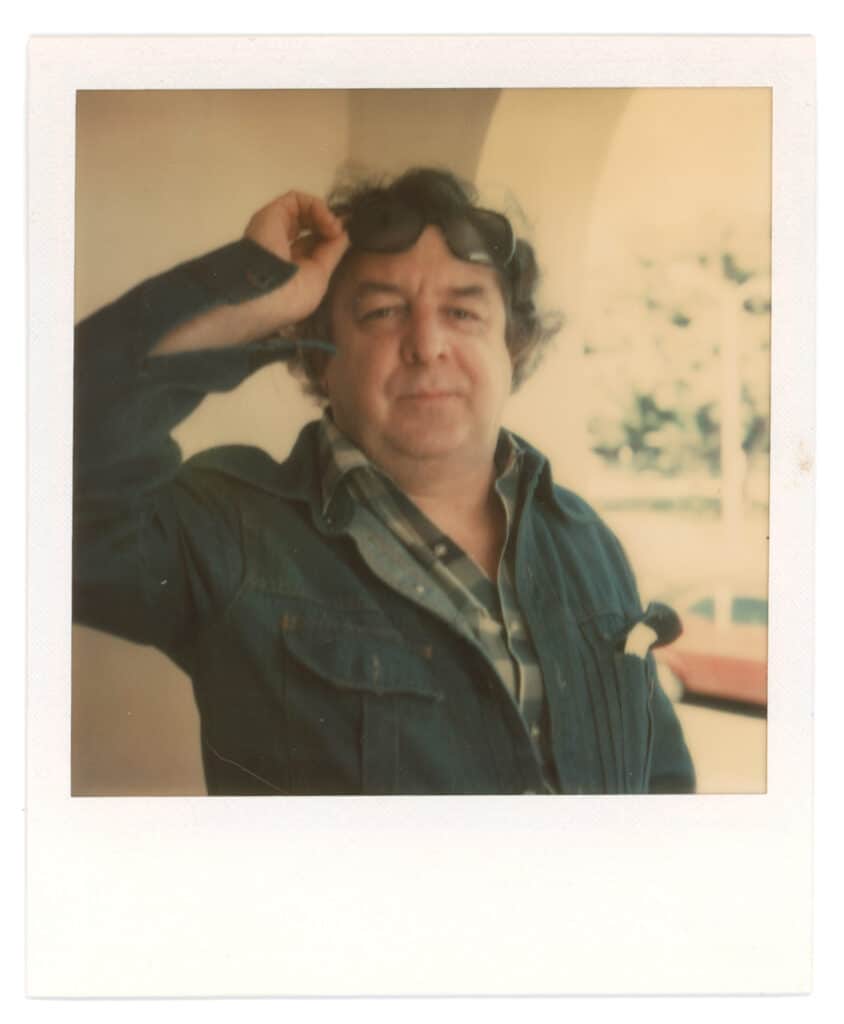In the early 1970s, Candy Clark arrived in Hollywood with little more than a modeling portfolio and a Polaroid SX-70 camera. Fresh off her breakout role in American Graffiti (1973), which earned her an Academy Award nomination, Clark found herself immersed in the burgeoning New Hollywood scene—a movement defined by youthful directors, experimental storytelling, and a raw, unvarnished approach to filmmaking. Now, more than five decades later, Clark has opened her personal archive to the public with Tight Heads, a new photobook featuring 87 candid Polaroids of the era’s rising stars and cultural icons.
The collection, curated and published by archivist Sam Sweet, offers an intimate glimpse into a pivotal moment in cinematic history. Clark’s subjects include a young Steven Spielberg, an introspective Richard Dreyfuss, a poised Anjelica Huston, and a playful David Bowie. Each image is accompanied by Clark’s handwritten anecdotes, providing context and personal reflections that enrich the visual narrative.
One standout photograph captures Spielberg in a relaxed pose, exuding the quiet confidence of a director on the cusp of greatness. Clark recalls, “I had a little crush on him, but he had no interest. Didn’t even make it to first base.” Another image features Dreyfuss, whom Clark describes as emotionally vulnerable during the filming of American Graffiti: “He had just broken up with a girlfriend prior to doing the movie and spent a lot of time crying in his bed. Not real fun.”
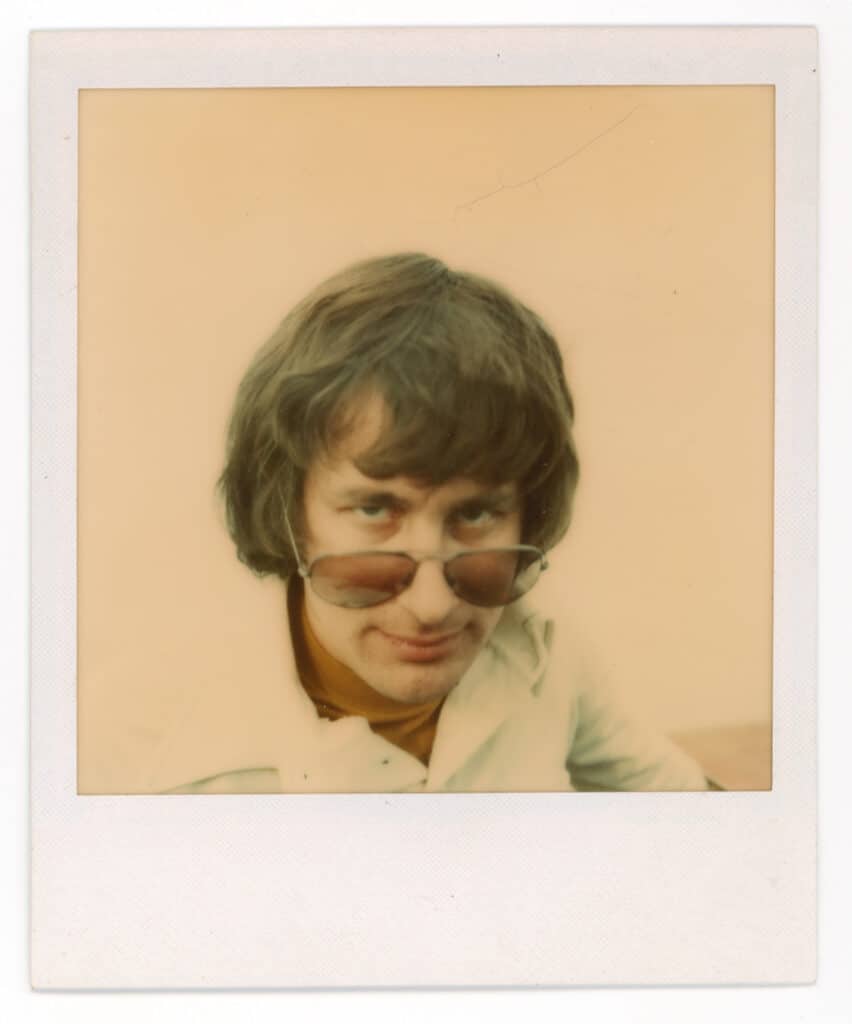
The title Tight Heads refers to the close-up framing Clark favored in her portraits. Influenced by Andy Warhol’s fascination with faces, she aimed to capture the essence of her subjects without artifice. “Then the people just posed. They weren’t as demanding as they are now,” Clark noted in a recent interview. This approach results in images that feel both spontaneous and deeply personal, reflecting the unfiltered energy of the time.
Clark’s journey from Fort Worth, Texas, to the heart of Hollywood was marked by determination and a willingness to embrace the unknown. After a chance encounter with a modeling scout, she moved to New York and quickly found success in fashion magazines like Seventeen and Glamour. Her transition to acting was equally serendipitous, leading to roles in films such as Fat City (1972) and The Man Who Fell to Earth (1976).
Throughout her career, Candy Clark maintained a unique perspective on the industry, often capturing moments that others overlooked. Her Polaroids document not only the famous faces of the era but also the camaraderie and creative spirit that defined New Hollywood. From impromptu gatherings to behind-the-scenes glimpses, Tight Heads serves as a visual diary of a transformative period in American cinema.
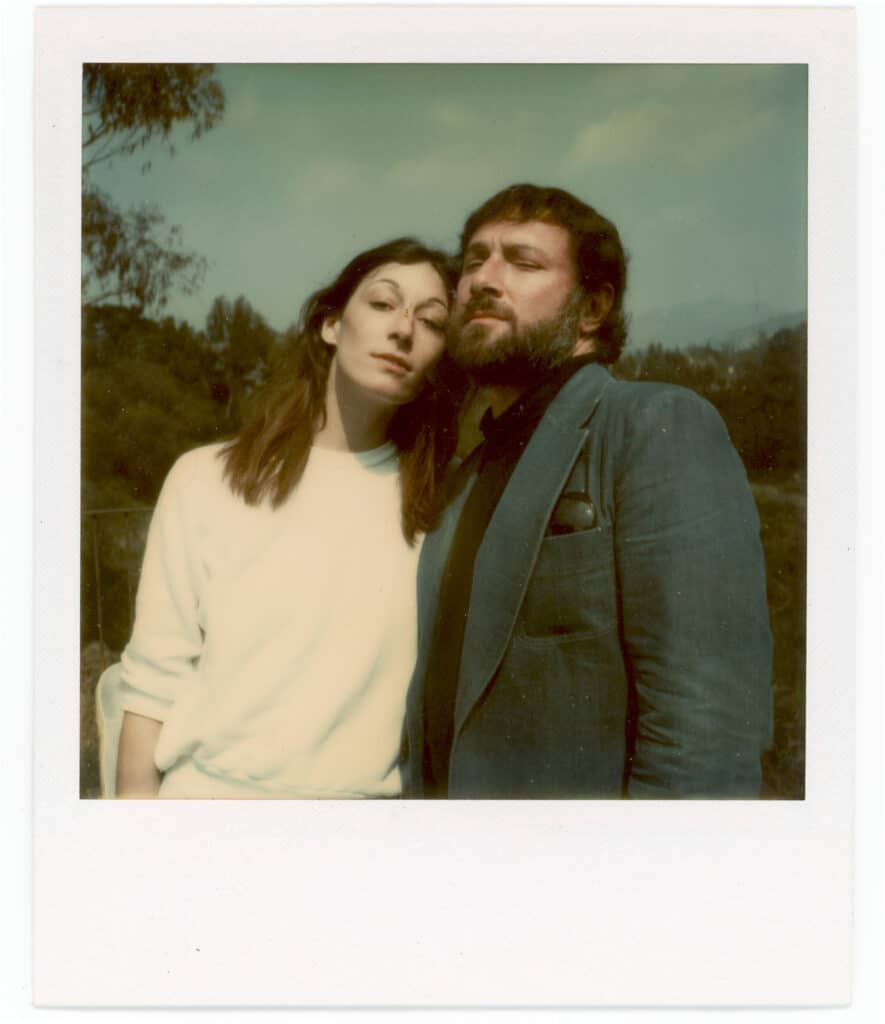
In one of the book’s more tender images, Anjelica Huston is seated outdoors, hair tousled by a breeze, wearing a crisp shirt and no makeup. The photo, taken during a languid afternoon in Laurel Canyon, shows Huston mid-laugh. “Anjelica was elegance in motion, even with orange juice in hand,” Clark writes. The image is casual, but unmistakably glamorous in a way only that era seemed to achieve.
David Bowie’s appearance in the book—robed and barefoot in a Beverly Hills hotel room—anchors the more surreal end of the spectrum. Though famous by then, Bowie’s demeanor is relaxed, almost meditative. “He was always polite, very composed,” Clark said. “He didn’t mind being photographed, so long as it wasn’t for show.” That particular image, with its strange stillness and soft hotel lighting, has already drawn comparisons to Nan Goldin’s work in its intimacy. And for good reason, as Candy Clark also recounted having once pinched David Bowie’s nipples.
Clark’s Polaroids are not polished, nor are they posed in the modern sense. They carry the minor imperfections of analog photography—washed-out highlights, off-center crops, the occasional thumb in frame. But those very quirks lend the work its charm. “I didn’t think of them as art,” Clark says. “I just wanted to remember my friends.”
Sam Sweet, whose independent press All Night Menu specializes in Los Angeles subcultures, recognized the rare quality of Clark’s archive almost immediately. “There’s a generosity in Candy’s photographs,” Sweet remarked. “They aren’t self-serving or nostalgic. They’re simply honest. And that makes them timeless.”
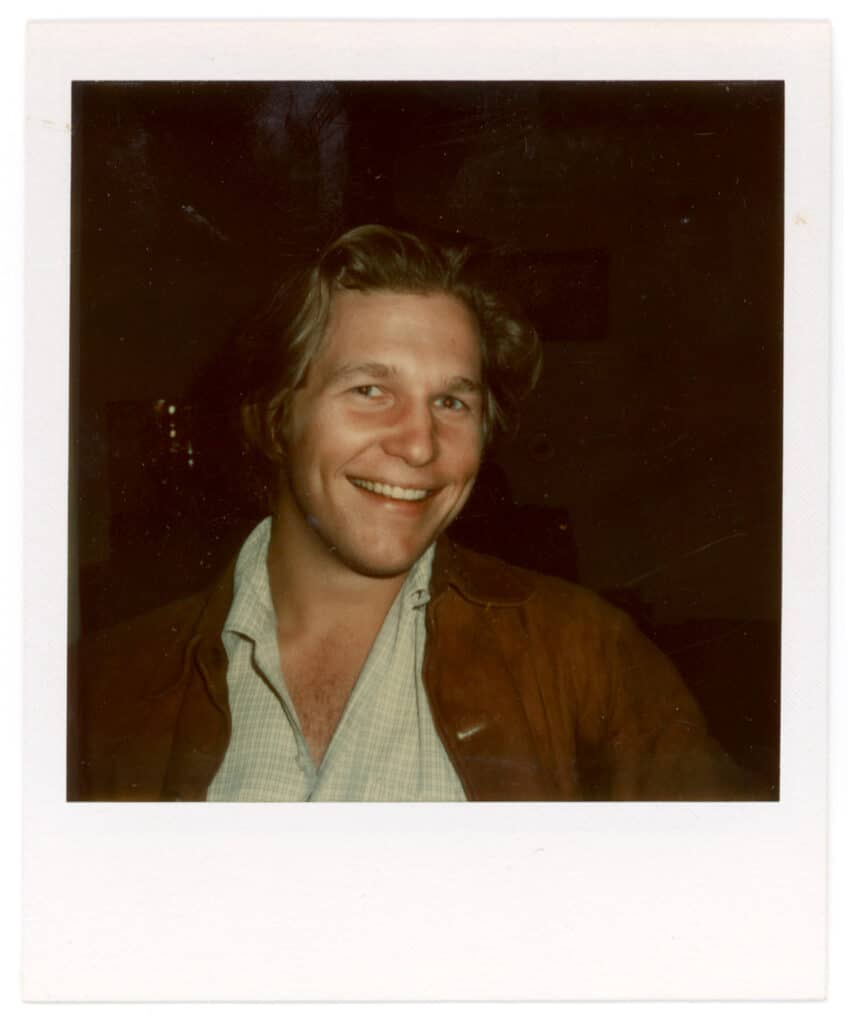
The book’s design is understated, letting the photos speak. Each Polaroid appears full-frame with white borders intact, accompanied by handwritten captions in Clark’s looping cursive. There are no long essays or celebrity forewords—only the quiet, insistent presence of memory. It’s a book you can open at random and still feel oriented, as though stepping into someone’s attic, dust motes dancing in the sunlit air.
In an era before smartphones and curated feeds, Clark’s photos remind us that spontaneity once ruled the frame. They offer not just a glimpse of young celebrities before they were stars, but a world before fame became a performance. There is a photo of Jeff Bridges, for instance, on a porch, drinking coffee barefoot. No pose, no smile—just a guy with bedhead and morning light. The actor also taught Clark how to drive in his Volkswagen bus.
The final image in the book is of Clark herself, snapped by a boyfriend in Venice Beach sometime in the late seventies. Her hair is windblown, her expression blank but open. “I look like a criminal,” she writes beneath the photo. “But I swear I’m not.” It’s a perfectly odd and self-deprecating end to a book full of affection for oddballs and outliers.
Clark never meant for any of these Polaroids to be art. She didn’t sort them, preserve them in albums, or label them neatly. For the last 50 years, the photos have sat largely untouched, tucked away in the drawer of an antique credenza in Clark’s Van Nuys ranch house. It was only when Sam Sweet came across them that their quiet brilliance emerged. “He thought it was gold,” Clark said. “I thought, ‘They’re just my old friends.’”
And maybe that’s the heart of it. Tight Heads doesn’t mythologize. It lets the past simply reveal itself. A woman with a Polaroid camera and a rare gift for closeness caught her friends as they were— young, talented, hopeful. Then, put them away; and moved on. It turns out, that’s exactly what makes them unforgettable.
Candy Clark – Tight Heads is published by All Night Menu and available for $60.


